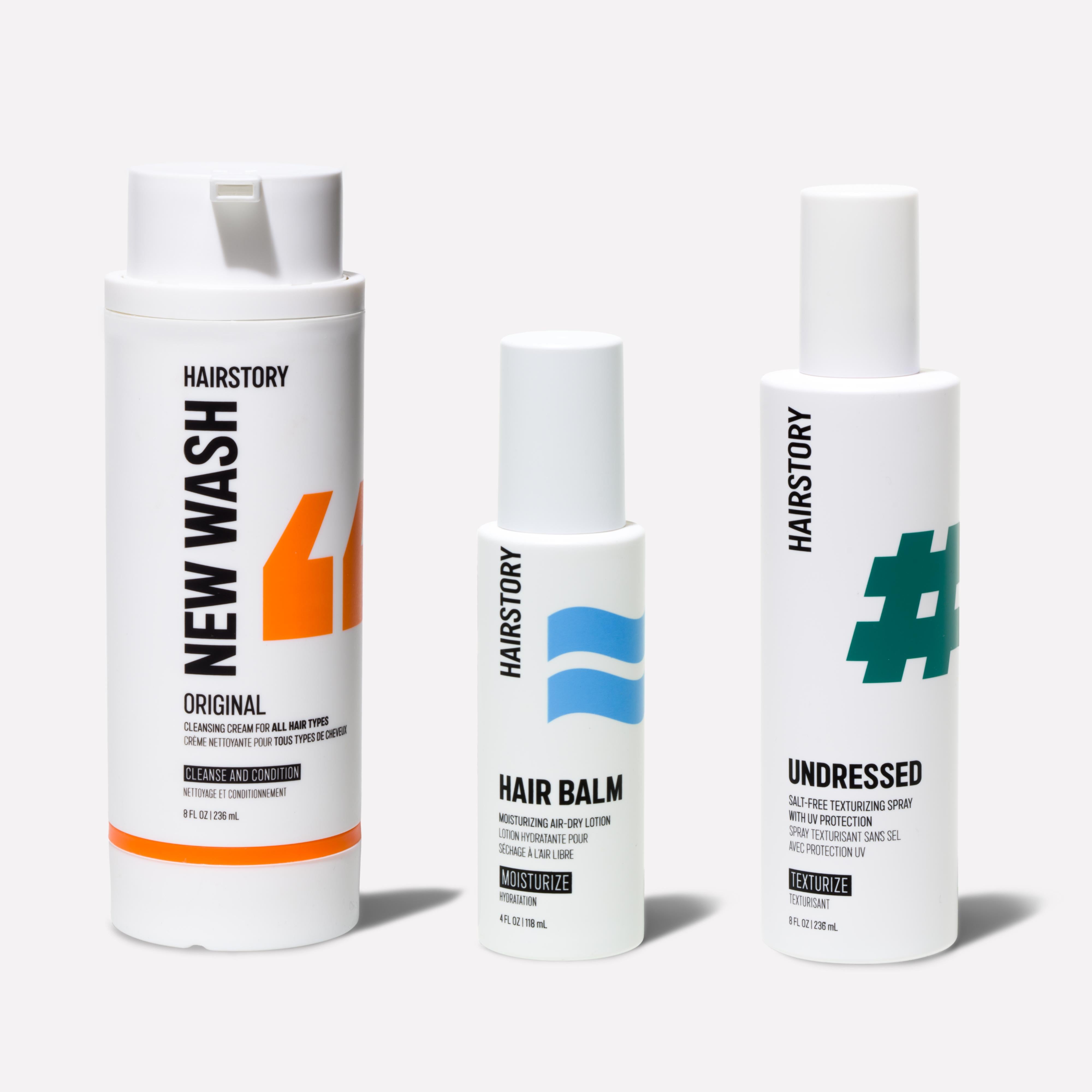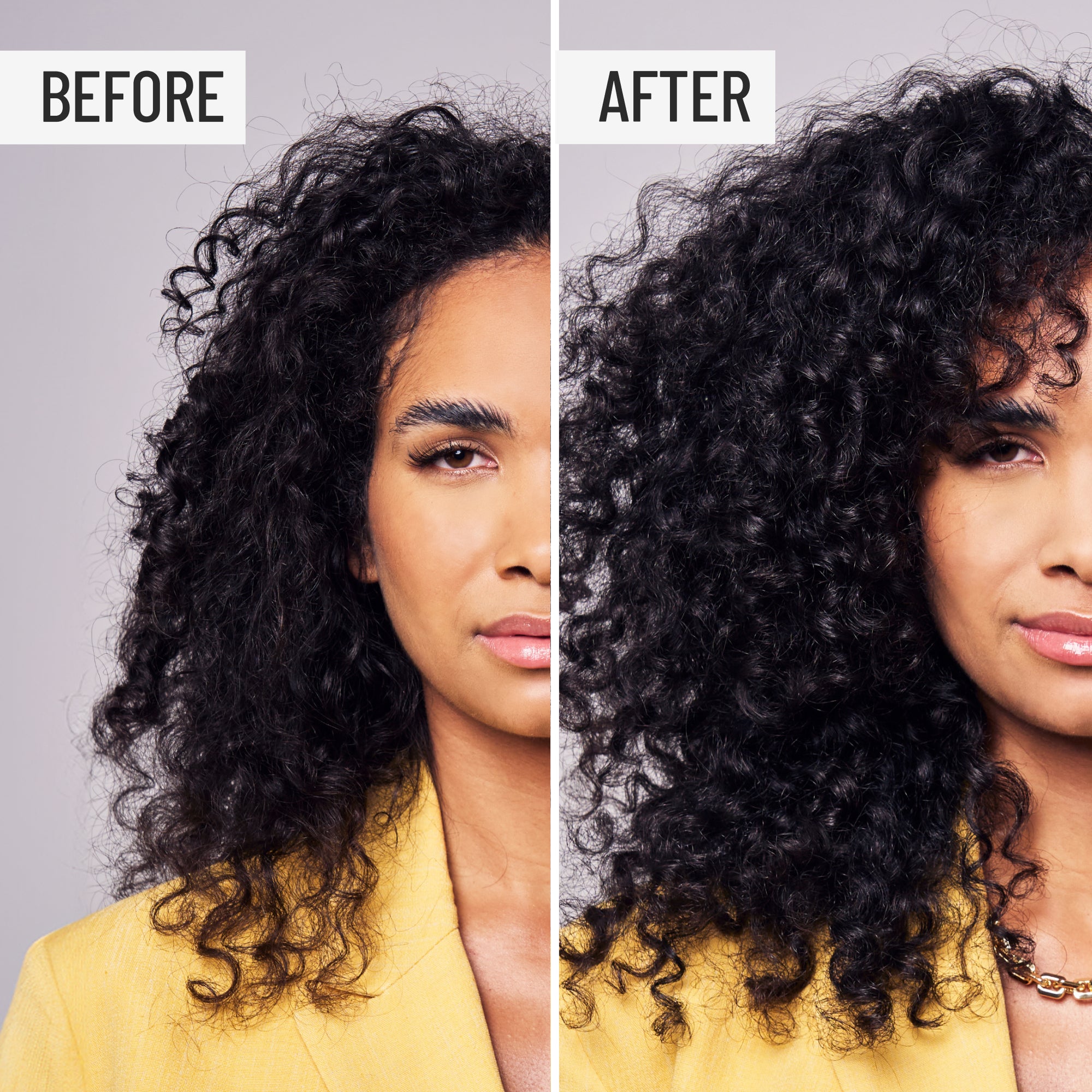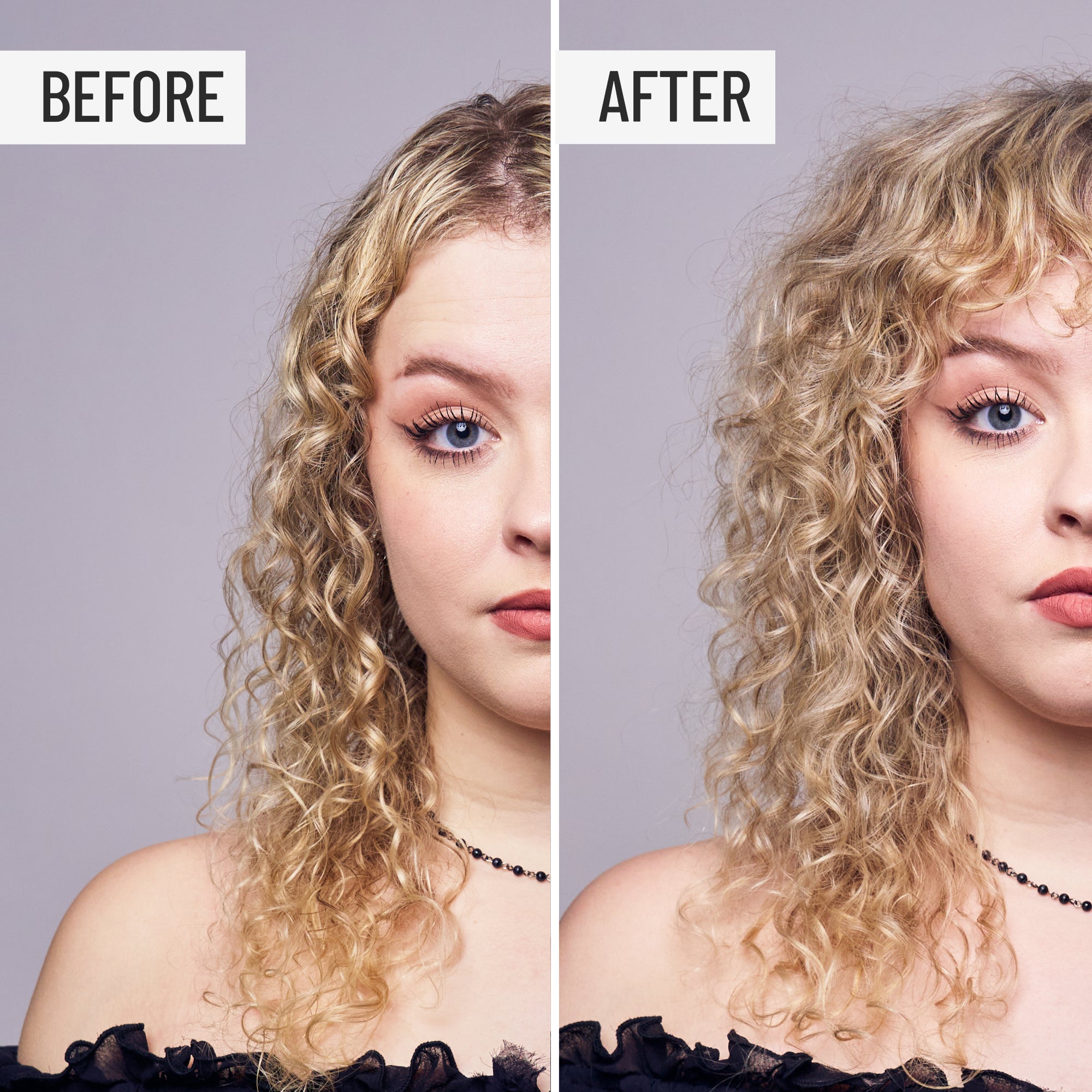What is Low Porosity Hair?
What Is Hair Porosity?
What is hair porosity exactly? When something is porous, it has the ability to readily absorb water. Conversely, non-porous substances repel water and moisture. Thus, low porosity hair has more difficulty absorbing water. Is your hair very dry? Chances are it’s also porous. Is your hair glassy and smooth? Then it’s probably not porous at all. This is because the low porosity hair strands are sealed and smooth, making the hair appear reflective and shiny.
What Determines Your Porosity?
When it comes to your hair, porosity and a proper hair cleansing routine has a lot to do with its condition – specifically how well it accepts and then retains vital moisture. Porosity is also a result of the shape of your hair strands, and curly hair tends to be more porous than straight hair. What best reflects your hair’s condition and its structure? Your cuticle.
The Science Of Hair Porosity
Each one of your hair strands is enclosed by an outer layer called the cuticle, which looks like shingles or scales, very much like bark on a tree limb. These shingles are made to interlock and to protect the hair fibers inside. When the hair cuticle is roughened, chipped, or forced open by heat or by chemicals, the hair strand becomes porous and is unprotected, allowing moisture – and pigment – to disperse if hair is color-treated. In addition, closed and properly sealed cuticles provide a smooth surface to reflect light and make hair appear shiny; open or lifted cuticles form a more suede-like surface that appears matte as hair dries.
For porous hair, moisture goes both ways: on a humid day, water in the atmosphere is absorbed into the cortex, the long fibers at the core of each strand that the cuticle protects. These fibers are made of proteins that swell as they absorb moisture. Because proteins absorb moisture at different rates, strands swell disproportionately and cause the hair shaft to twist and bend irregularly. And that is why frizz happens.
How Texture Influences Hair Porosity
Condition isn’t the only factor in porosity. Structure plays a part as well. Hair with a curl pattern can be highly porous simply because it isn’t straight. Lots of curves, corners and bends result in the surface of the hair cuticle being more jagged than on straighter strands. Curls, therefore can be naturally more permeable – and highly porous. Plus, the winding shapes create more of a challenge for the moisturizing natural oils produced by your scalp to travel down the shaft and reach the typically drier ends.
Straight hair is often not as porous; the cuticles lay flat and are tightly sealed, water is more easily repelled than absorbed, and moisture is securely sealed in. For those who rarely use heat-styling tools, styling products, and are “color virgins,” it can be pretty simple to keep hair in good condition.
These are the opposite ends of the hair type spectrum: highly porous hair both absorbs and loses moisture easily, which means that it needs help retaining it. Low porosity hair is actually more difficult to effectively moisturize but generally retains moisture quite well. So, you may be asking yourself, “What type of hair do I have?” and, “How can I tell its level of porosity?” We’ve got you covered with these simple indicators!
How Porous Are You?
There are a few ways to measure how porous your hair is:
1. The Float Test
Take a few strands of hair that you have naturally shed, or pluck them out if you’re game! Fill a cup or bowl with room temperature water. Highly porous hair should quickly take in water and sink to the bottom of the bowl. Low porosity hair is naturally water-resistant and should remain floating towards the surface of the water, even after a few minutes.
If your strands hover somewhere in the middle and neither sink or float, your hair is probably of medium or “normal” porosity, which has the advantage of both absorbing and retaining water.
2. The Spray-bottle Test
Mist a section of your hair with water from a spray bottle and watch it closely. If the water beads up or even rolls off of your hair after a few minutes, you have low porosity. If it sinks in and disappears, your hair and scalp are likely highly porous.
3. The Slide Test
Take a strand of dry hair and slide your fingers up the hair shaft towards the scalp, against the grain of the cuticle layer. If it feels dense and hard, you have low porosity. If it feels smooth, you have an average level of porosity. If it feels very bumpy or rough, your hair is likely to be highly porous.
Of course, one head of hair may produce different textures in different areas, and some may be more porous than others. Even a single strand can be more porous at the root than at the ends. Longer, older hair has been through more than recent growth; it has had more time to get damaged, and your top layers suffer more from sun exposure than the inner layers that rarely see the light of day.
Those inner layers are often in better condition simply because they are closer to the scalp and the oil it produces to naturally condition hair.
Characteristics of low-porosity hair:
• It does not get easily saturated when wetted down.
• It takes a long time to dry without adding heat.
• Products tend to build up on the surface rather than absorb.
• Added oils don’t penetrate quickly and sit on the surface of any strand of hair.
Characteristics of normally porous hair:
• It is bouncy and elastic, not brittle and prone to breakage.
• It generally requires very little maintenance.
• It easily accepts and then retains applied moisture.
• It holds styles well without the use of many styling products and accepts color well and evenly.
Characteristics of highly porous hair:
• It easily absorbs water but requires more hair care products.
• It often looks and feels dry.
• It tends to frizz.
• It dries quickly.
• It easily takes on color, even colorants added to shampoos, and such.
• Color treatments fade quickly.
Knowing your hair porosity can help you select the right hair products and care to keep your hair healthy, well-moisturized and strong. Understanding how to moisturize hair takes trial and error, but knowing your hair type and level of porosity can help narrow down the products that would be most beneficial to your lovely locks.
High-Porosity Hair Care
First, don't increase your hair’s high porosity by doing things that dry it out. Isolate the root causes that may be unwittingly contributing to damaged hair. Ask yourself:
- Do I use detergent-based shampoo?
- Do I blow-dry, flat iron, or use a curling wand?
- Do I go out in the sun without a hat?
- Do I swim in chlorine without a cap?
- Do I lighten my color with bleach?
- Do I lack protein, vitamins A, B-12, B-7, C, iron, and zinc?
If you answered yes to any of the above, some changes in your habits are in order.
Read on for ways to claim your right to moisture.
Washing & Conditioning
Hair in good condition – no matter how porous – starts in the shower. Rethink washing; it can be more important to thoroughly cleanse your scalp and roots than to cleanse your full length of hair. A clean, healthy scalp, after all, produces healthy growth.
Highly porous hair is most likely dry hair, and it’s often curly or coarse. General rules for keeping it supple and frizz-free include adopting a washing/conditioning method that avoids harsh detergents. Look into co-washing, conditioner-only washing, or the LOC Method of layering moisture with liquid, cream, and oil. Incorporating any of these methods into your hair care regimen can help boost the texture of your hair and scalp.
Most rinse-out conditioners employ what are called cationic surfactants to do the job of moisturizing. At one end of each surfactant molecule is a positive charge that binds to the negative charge of any given strand of hair; the more damaged hair is, the stronger the charge. Surfactants surround the strand and help the cuticle to lay flat, and hair feels smooth again, even after rinsing. Conditioning surfactants can also deliver other cosmetic substances, such as silicone.
Make it a habit to rinse out all cleansers and conditioners with cold water to seal the cuticle and prevent frizzy curly hair from overtaking.
In addition, conditioners, especially leave-in formulas, such as Hair Balm, are very similar to skin moisturizers that either help block the loss of water, or attract it. Emollients, mainly lipids and oils, prevent evaporation of water by forming a barrier; the waxier the ingredient, the more pronounced the effect. Humectants may also have an emollient effect, but by attracting rather than repelling water. More lipids in a formulation mean a greater emollient effect.
Deep conditioning treatments, often richer formulas that contain less water than daily conditioners, can be valuable to quench dry hair. Make these a part of your shower routine on a weekly basis to remain moisturized, but keep in mind that even dry hair has a saturation point. Some “intensive” deep conditioning products aren’t much more moisturizing than regular conditioners – more feel-good than do-good – in fancier packaging. Your hair will only absorb what it needs, and so even if you leave it on all day, you might see no difference than what 10 minutes would do.
Drying and Combing
Once you’re out of the shower, handle hair with care. Use a microfiber towel or a well-worn and soft t-shirt to pat and squeeze rather than rub hair dry. Use a wide-toothed comb to detangle if necessary: you risk making any knots even tighter by starting at the scalp and trying to comb your length in one motion. Instead, start combing at the ends and then work your way upward to avoid breakage.
Styling
If curl definition and moisture retention are your goals, twisting, braiding, and knotting are all great ways to help trap moisture and give more time for the hair to slowly but surely absorb it.
Finally, air-drying is the best way to avoid parching hair further with heat tools. But if you must blow-dry or iron – there’s nothing wrong with some variety – please do it safely by following some simple, heat styling precautions. It is crucial that you use a hair protectant when heat styling, but it’s not a get-out-of-damage-free card. Choose a product containing copolymers, proteins, and essential oils or fatty acids – to both insulate hair from heat and prevent moisture loss – such as Hairstory Dressed Up.
Too much heat focused directly on your hair dehydrates it, and if very wet, basically boils it when ironing it to curl or straighten. Let your hair air-dry 90 percent of the way, and then use a blow dryer for the last 10 percent.
Note: If your hair is dry and you also experience fatigue, intolerance to cold, weakness or unusual hair loss, consult your doctor about possible underlying conditions.
Low-Porosity Hair Care
Low porosity may be the reason why your hair doesn’t accept additional moisture and why it may be lacking volume. The good news, however, is that low-porosity hair is in relatively good condition and therefore may not require the same degree of attention that high porosity hair does – unless you are challenging it with extreme heat styling, bleaching, chlorine, or even saltwater.
Low porosity hair has very compact cuticles, so it’s challenging to inject moisture into the hair shaft, although it does retain moisture once absorbed. To open the cuticle enough to accept moisture, use some form of heat. Apply conditioning treatments and use a hooded dryer, a steamer or even a warm towel or shower cap for about ten minutes to help these products penetrate and bind.
Hair with low porosity will likely appear oily much faster than highly porous, dry hair does. Smoother cuticles allow your natural oils to travel effortlessly down the hair shaft and are absorbed gradually along the way; oils in conditioners may only contribute to a greasy situation.
If you wear your hair short, any damage is usually fixed with scissors, but the temptation is to shampoo daily, which removes oil, but keeps the scalp in a vicious cycle of being stripped and then overproducing oils in response. Your scalp knows what it – and you – are doing. But it can be trained.
If oiliness is your challenge, shampoo may not be your solution. One solution is to extend the time between washings with an oil-absorber such as Powder. Like other dry shampoos, don’t rely on it as a primary cleanser to avoid build-up and clogged follicles. Longer hair is, obviously, older and susceptible to damage on many fronts, so treat it like the delicate fabric it is and follow proper heat-styling protocol.
Both types would do well to try New Wash, a detergent-free shampoo alternative that cleans hair without stripping or drying, and conditions at the same time so that one product may be all you need to keep your hair – however porous it is – looking and feeling its best.
In Conclusion
You may have imagined that embracing your natural texture would be easier than trying to erase it, whether by chemicals or styling. While natural is generally healthier, it’s not necessarily simpler, and some people may even work harder at it, especially if growing it is your goal. But with the right attitude, the right products and some good habits, happier, healthier hair is well worth it.































